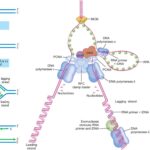IB Biology 11 Views 1 Answers
Sourav PanLv 9November 9, 2024
How does polyploidy contribute to speciation in the genus Allium?
How does polyploidy contribute to speciation in the genus Allium?
Please login to save the post
Please login to submit an answer.
Sourav PanLv 9May 15, 2025
Polyploidy plays a significant role in the speciation of the genus Allium, which includes well-known species such as onions and garlic. This process, characterized by the presence of more than two complete sets of chromosomes, can lead to immediate reproductive isolation and subsequent diversification. Here’s how polyploidy contributes to speciation in Allium:
Mechanisms of Polyploidy-Induced Speciation in Allium
- Instantaneous Reproductive Isolation:
- Polyploidy often results in the formation of new species that are reproductively isolated from their diploid ancestors. For instance, when a diploid plant undergoes a polyploidization event (such as through chromosome doubling), the resulting tetraploid or higher ploidy level cannot successfully mate with diploid individuals because their gametes have different chromosome numbers. This reproductive barrier is crucial for speciation, as it prevents gene flow between the new polyploid and its progenitors, allowing the polyploid to evolve independently.
- Ecological Diversification:
- Polyploid species often exploit different ecological niches compared to their diploid relatives. In the Allium sikkimense complex, for example, different ploidy levels are associated with varying ecological adaptations, which can lead to niche divergence. This ecological specialization further promotes reproductive isolation as polyploids adapt to specific environments that differ from those occupied by diploids.
- Hybridization Events:
- Polyploidy can arise through hybridization between different species (allopolyploidy), which combines the genomes of two distinct species. This not only leads to new genetic combinations but also creates individuals that may have traits advantageous for survival in particular environments. For instance, hybridization followed by chromosome doubling can result in fertile offspring that possess characteristics from both parent species, enhancing adaptability and promoting speciation.
- Increased Genetic Variation:
- Polyploid organisms typically exhibit greater genetic diversity due to the additional sets of chromosomes. This genetic variation can provide a broader range of traits for natural selection to act upon, facilitating rapid adaptation to changing environmental conditions and leading to the emergence of new species over time.
- Budding Speciation:
- In some cases, polyploidy can lead to “budding” speciation, where new species arise from existing ones through gradual divergence facilitated by polyploidization events. The Allium sikkimense complex exemplifies this process, where different ploidy levels correspond to distinct lineages that have evolved independently while co-occurring in the same geographic area
0
0 likes
- Share on Facebook
- Share on Twitter
- Share on LinkedIn
0 found this helpful out of 0 votes
Helpful: 0%
Helpful: 0%
Was this page helpful?




